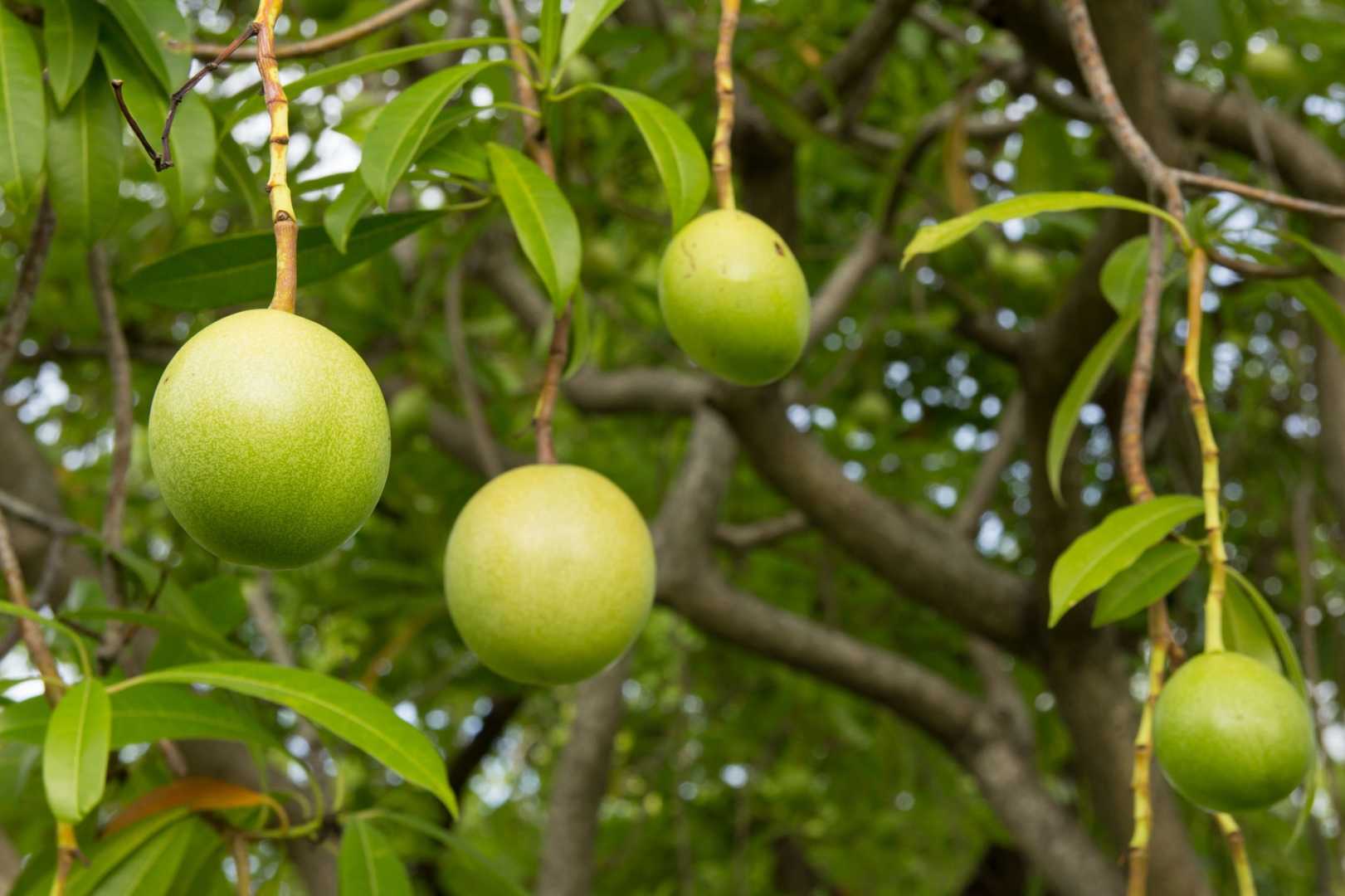Entertainment
The Deadly Secrets of the Pong Pong Tree Unveiled

Bangkok, Thailand — In the latest season of HBO‘s hit series The White Lotus, the ominous pong pong tree emerges as a silent harbinger of death. As the show’s narrative unfolds, a hotel employee warns guests against consuming the fruit of the Cerbera odollam, known for its lethal toxicity. With the season finale approaching, fans are left wondering how deeply this threat will resonate with character Timothy Ratliff, who struggles with suicidal ideations.
Beyond the fictional realm, the pong pong tree is notorious in Southeast Asia, carrying a grim reputation as the ‘suicide tree.’ Annually, it has been linked to numerous fatalities due to its toxic fruit, prompting concern among health professionals and botanists alike. As Hilary Hamnett, an associate professor in forensic science at the University of Lincoln, explains, the tree’s seeds are particularly potent, containing the active poison cerberin, which disrupts cardiac function.
“Like with any poison, it depends on the individual—factors include age, sex, body weight, and existing health conditions,” Hamnett said. The seeds, which resemble peach stones, possess a bitter taste that deters most animals from consuming them. However, humans have historically learned to grind the seeds into a powder and ingest them for various purposes, from medicinal uses to tragic outcomes.
Cerberin, a cardiac glycoside, poses significant risks. Once ingested, the poison enters the bloodstream, often causing nausea, vomiting, and diarrhea as the body attempts to purge the toxin. Within 30 minutes, it may dangerously lower heart rates by interfering with the sodium-potassium pump that regulates cardiac movements. “It will override the heart’s ability to contract and relax,” explained Owen McDougal, a professor of chemistry and biochemistry at Boise State University. “Eventually, the heart muscle may cease functioning.”
The dangers of the pong pong tree are underscored by a study from Kerala, India, which indicated that it was a factor in nearly half of all plant poisoning cases reported between 1989 and 1999. Approximately 3,000 fatalities have been linked to the pong pong tree and its close relative, the sea mango (Cerbera manghas), known historically for its use in ordeal trials in Madagascar.
“Individuals accused of crimes were forced to drink a concoction of tangena, derived from the sea mango, with outcomes often resulting in death for those who did not vomit,” noted research published in 2002. These tragedies often unfold in rural areas lacking access to immediate medical care, increasing the threat posed by this deadly flora.
However, the reach of the pong pong tree is expanding on a global scale, leading to incidents of poisoning even in countries like the United States. A 2018 report documented six cases, three of which were fatal, including a 33-year-old who ingested the seeds marketed as a weight-loss supplement.
While McDougal highlighted a case where recovery was possible, he emphasized the absence of a universal antidote for pong pong toxicity. Treatments may include administering poisons with counteracting effects, such as atropine, to manage symptoms. “In some cases, individuals may experience a perilous drop in heart rate, with death potentially occurring within an hour without timely intervention,” Hamnett explained.
As the narrative of The White Lotus delves into the dark allure of the pong pong tree, the reality of its lethal potential serves as a stark reminder. With interest in exotic plants rising globally, there’s an urgent need for awareness surrounding the dangers of nature’s toxic offerings. Some fruits, it seems, are best left uneaten.












